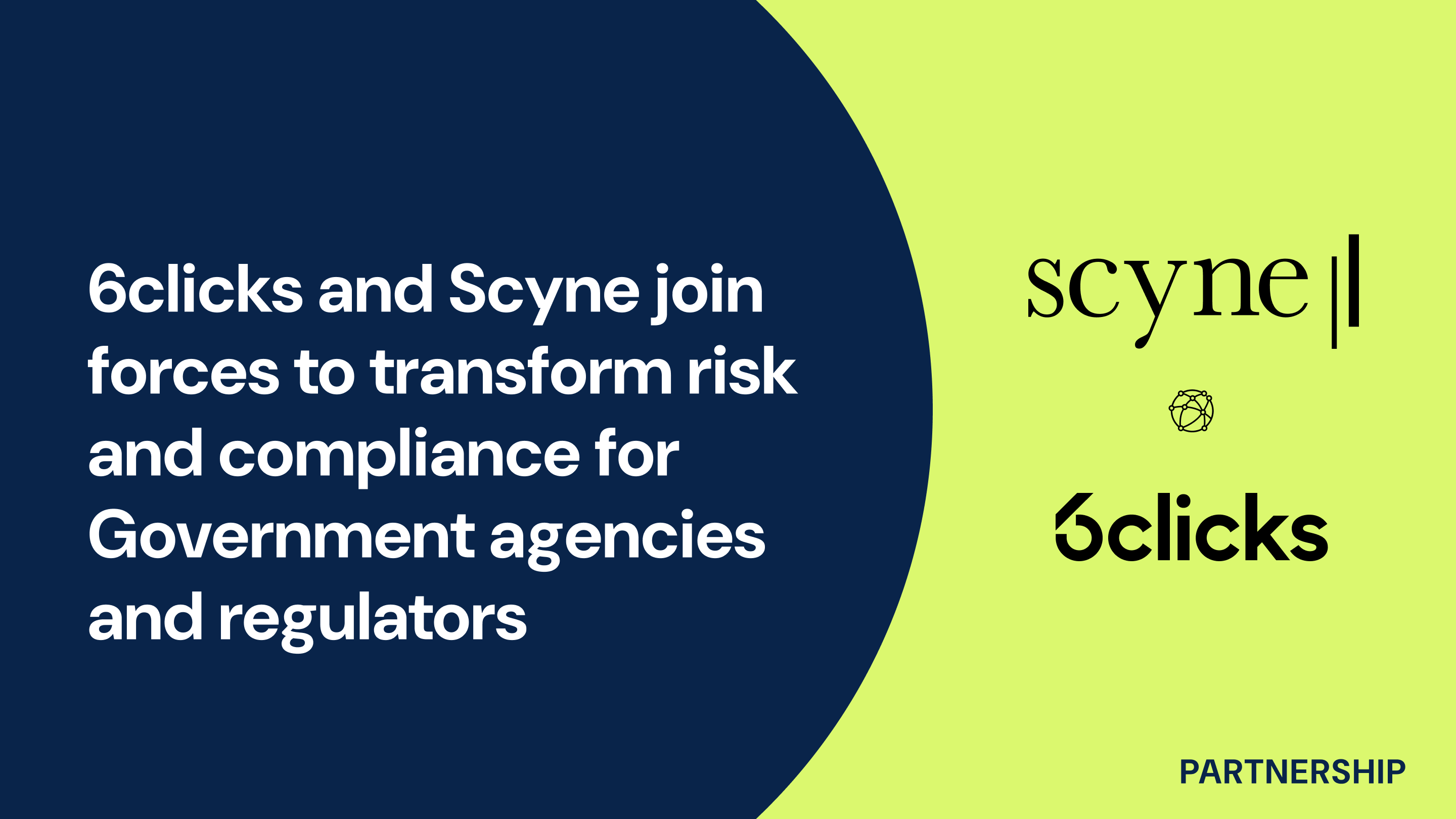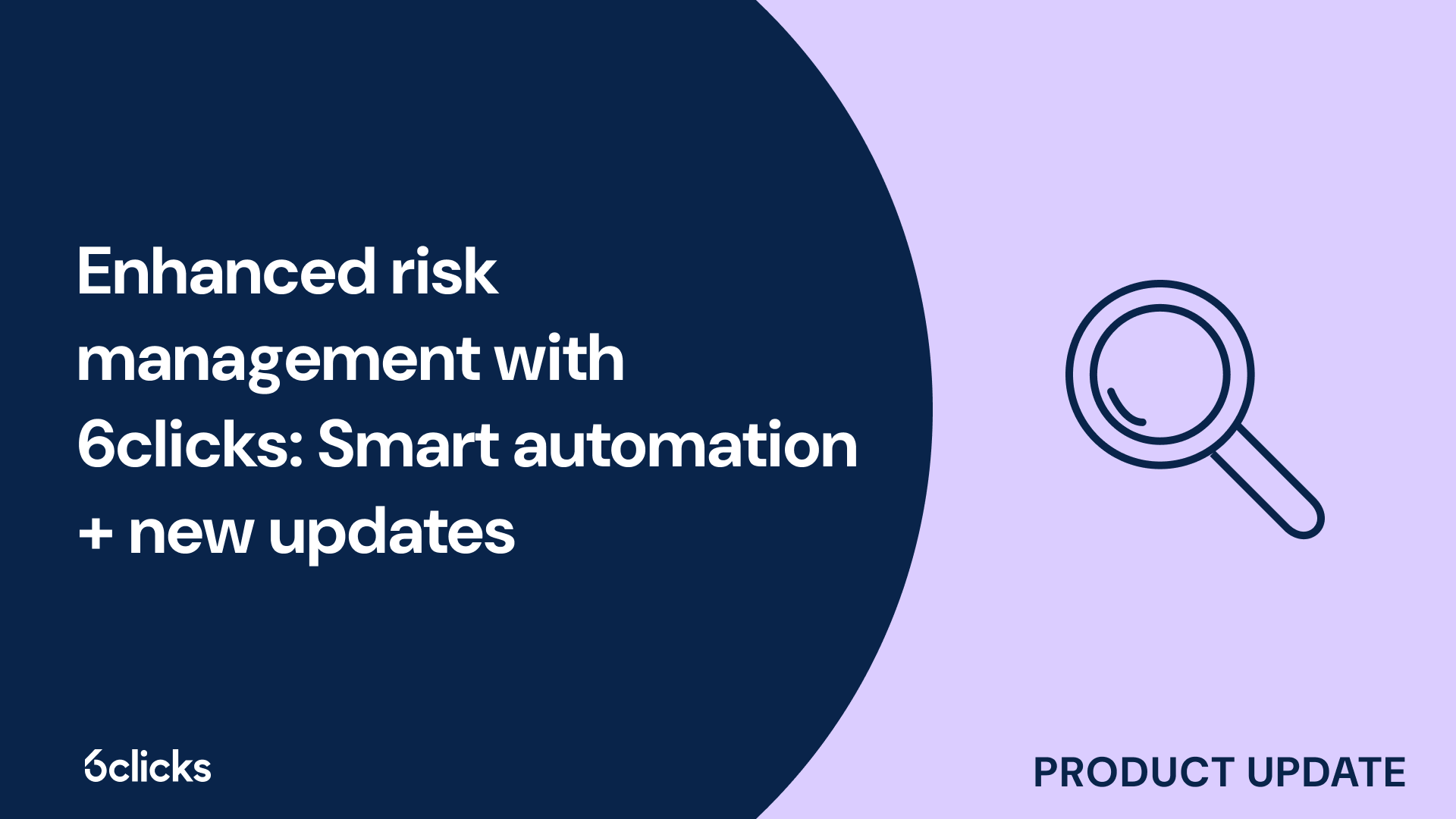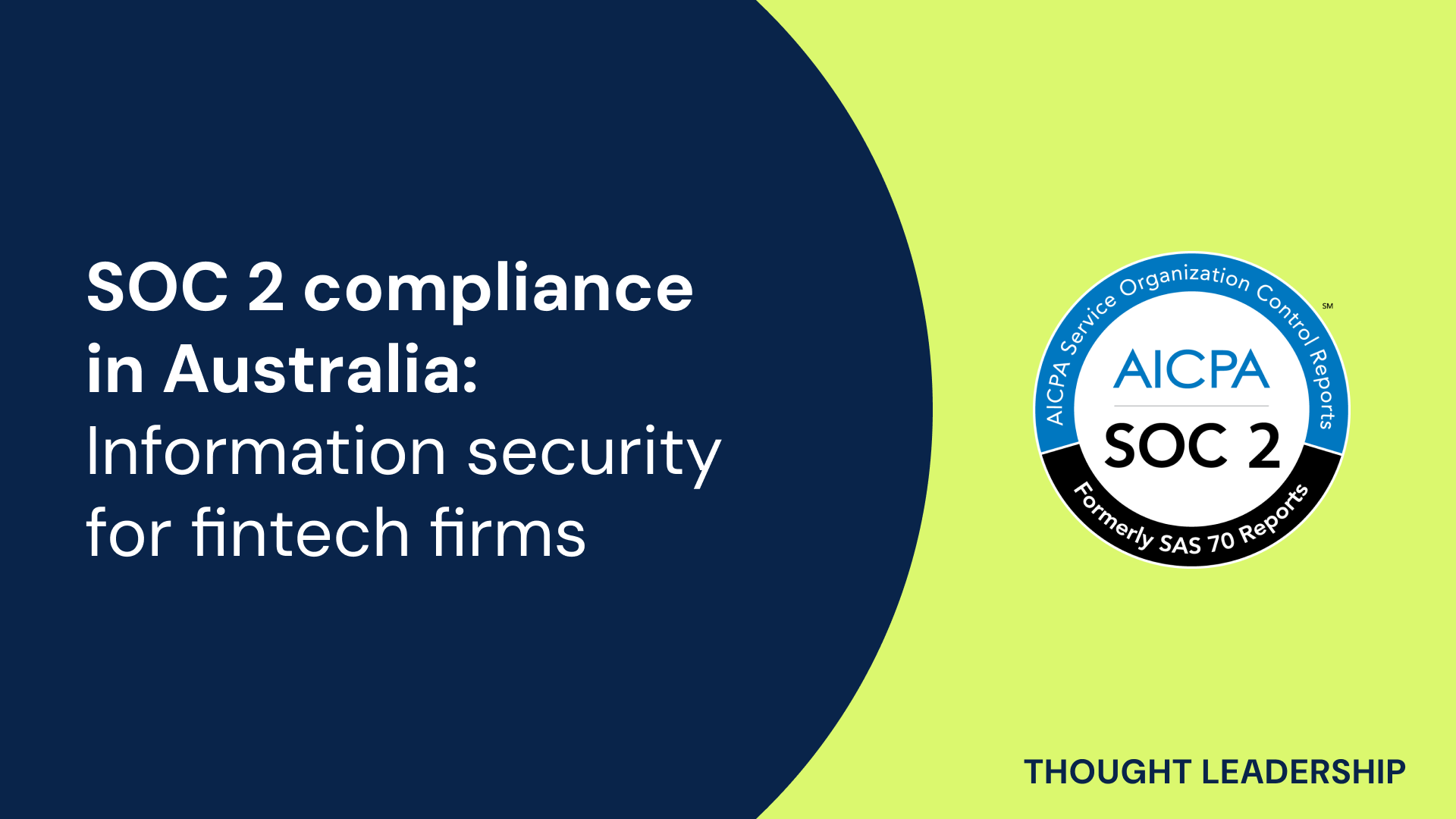The GRC buyer’s guide for 2025: Building resilience with AI-powered, federated solutions
Discover the ultimate GRC buyer's guide for 2025! Uncover how AI-powered, federated solutions transform compliance and security management for industries like government, aerospace, banking, and more. Learn about centralized control, continuous compliance, and advanced cyber GRC capabilities. Download now!
-1.png?width=200&height=249&name=Group%20193%20(1)-1.png)
The GRC buyer’s guide for 2025: Building resilience with AI-powered, federated solutions
What is an ISMS?
An Information Security Management System (ISMS) is a comprehensive framework that ensures the confidentiality, integrity, and availability of an organization's information. It encompasses a set of processes, policies, procedures, and controls designed to manage and mitigate security risks and to protect sensitive data from unauthorized access, cyber attacks, and physical threats. An ISMS is crucial for organizations of all sizes and industries as it provides a systematic approach to ensure the protection of valuable assets, compliance with legal, regulatory, and contractual requirements, and the ability to effectively respond to security incidents.
Key Features of an ISMS:
- Risk Assessment: An ISMS includes a systematic evaluation of potential security risks to identify vulnerabilities and prioritize mitigation measures.
- Policies and Procedures: Establishing clear and comprehensive security policies and procedures that outline specific security measures, access controls, and acceptable usage guidelines.
- Asset Management: Identifying and classifying organizational assets (hardware, software, data) to effectively allocate resources and protect critical information.
- Access Control: Implementing measures to prevent unauthorized access to information and resources through user authentication, role-based permissions, and regular review of user access rights.
- Incident Management: Developing a process to detect, respond to, and recover from security incidents, ensuring business continuity and limiting the impact of any breach.
- Internal Audits: Regularly conducting internal audits to assess the effectiveness of security controls, identify areas for improvement, and ensure compliance with security policies.
- Training and Awareness: Educating employees on security best practices, potential risks, and their roles and responsibilities in maintaining information security.
- Continuous Improvement: Establishing a culture of continual improvement by regularly reviewing and updating security measures based on changing threats, new technologies, and industry best practices.
- External audits and certification: Seeking certification from independent certification bodies validates the effectiveness of the organization's security management system and demonstrates compliance with international standards such as ISO 27001.
Scope of the article
Scope of the Article: Exploring the Key Features of an ISMS
In today's digital age, where security risks and threats are prevalent, organizations need to prioritize safeguarding their valuable information from unauthorized access and cyber attacks. This is where an Information Security Management System (ISMS) plays a pivotal role. The purpose of this article is to delve into the key features of an ISMS and shed light on how it helps organizations address security risks and meet compliance requirements.
An ISMS is a comprehensive framework that ensures the confidentiality, integrity, and availability of an organization's information. It goes beyond implementing security measures and focuses on establishing a proactive approach to manage and mitigate risks effectively. By adopting an ISMS, organizations can implement a systematic evaluation of potential security risks, identify vulnerabilities, and prioritize measures to counteract them. This risk assessment is a crucial first step towards developing robust security measures.
Furthermore, an ISMS facilitates the establishment of clear and comprehensive security policies and procedures. These guidelines outline specific security measures, access controls, and acceptable usage guidelines that all employees must adhere to. By doing so, organizations can enforce access control policies and prevent unauthorized access to sensitive information, ensuring that only authorized personnel can access relevant resources.
Another essential feature of an ISMS is incident management. It helps organizations develop a process to detect, respond to, and recover from security incidents swiftly. By having a well-defined incident management process, organizations can ensure business continuity, limit the impact of any security breach, and effectively minimize the damage caused.
Additionally, an ISMS includes regular internal audits to assess the effectiveness of the implemented security controls. These audits help organizations identify areas for improvement and ensure compliance with security policies and standards. By conducting comprehensive internal audits, organizations can proactively identify and address any potential weaknesses and enhance their security posture.
Security management
Security management is a critical aspect of any organization's operations in today's digital age. With the increasing frequency and complexity of cyber attacks, organizations must prioritize safeguarding their valuable information from unauthorized access and breaches. Effective security management involves implementing security measures, establishing clear policies and procedures, conducting regular audits, and having a proactive incident management process in place. In this article, we will explore the key features of security management and how they help organizations address security risks, meet compliance requirements, and ensure the confidentiality, integrity, and availability of their information.
Security measures
Implementing effective security measures is crucial to protect the confidentiality, integrity, and availability of an organization's information assets. The ISO 27001 standard provides practical guidelines to establish and maintain an Information Security Management System (ISMS).
The first key feature is the development and implementation of information security policies. These policies help define the organization's approach to managing information security and provide a framework for action. They should be regularly reviewed and updated to address evolving risks and compliance requirements.
Asset management is another important aspect. Organizations need to identify their information assets, assess their value, and implement appropriate security measures to protect them. This includes conducting regular inventories, classifying assets based on their criticality, and implementing safeguards such as data encryption and backup procedures.
Access control is a critical security measure to ensure that only authorized individuals can access sensitive information. It involves implementing strong authentication mechanisms, role-based access controls, and regular user access reviews.
ISO 27001 also emphasizes the importance of physical and environmental security. Organizations should implement physical controls such as access control systems, surveillance cameras, and secure storage areas for sensitive information.
Regularly monitoring and managing security incidents is essential. Organizations should establish incident management procedures to detect, respond to, and recover from security incidents promptly.
Ensuring compliance with legal and regulatory requirements is a key obligation. Compliance requirements should be regularly assessed, and appropriate measures implemented to meet these obligations.
Implementing these key security measures as per the ISO 27001 standard enables organizations to establish a robust ISMS that effectively mitigates risks and protects their valuable information assets.
Access control policies
Access control policies play a crucial role in an Information Security Management System (ISMS) as they establish rules and procedures to govern who can access and use an organization's information assets. Implementing effective access control policies is essential to limit access to authorized personnel and protect sensitive data from unauthorized access and potential security breaches.
Access control policies should include mechanisms for strong authentication, such as password complexity requirements, two-factor authentication, or biometric identification. These measures ensure that only authorized individuals can gain access to the organization's systems and data.
Monitoring network traffic is another vital aspect of access control. By implementing monitoring tools, organizations can analyze network traffic patterns, identify potential threats or unusual activities, and take action to prevent security breaches. This constant monitoring and analysis provide real-time protection against unauthorized access attempts and enhance the organization's ability to respond to security incidents promptly.
It is equally important to establish well-defined roles and responsibilities for both digital and physical mediums of technology. By clearly stating who has access to certain systems or areas, organizations can ensure that access is limited to only those who require it to perform their duties. This helps minimize the risk of insider threats and unauthorized access attempts.
Unauthorised access
Unauthorised access refers to unauthorized individuals gaining entry into an Information Security Management System (ISMS) or its associated resources without proper authorization. This could result in severe implications for an organization's information security and overall operations.
The implications of unauthorised access can be significant. It can lead to data breaches, loss or theft of sensitive information, sabotage, or disruption of services. Unauthorised access can also compromise the integrity and confidentiality of data, affecting an organization's reputation and customer trust.
To prevent unauthorised access, several measures can be implemented within an ISMS. One key measure is establishing robust access control policies. These policies define who can access specific systems, data, or physical areas, and under what circumstances. Access control policies should incorporate mechanisms for strong authentication, such as password complexity requirements, two-factor authentication, or biometric identification.
Furthermore, organizations should regularly review and update their access control policies to align with changing security requirements. Implementing continuous monitoring and analysis of network traffic patterns is also essential. This allows for the detection of potential threats or unusual activities, facilitating proactive prevention of security breaches.
Training employees on security best practices, conducting regular internal audits, and ensuring compliance with regulatory and contractual requirements are additional prevention measures that can mitigate the risk of unauthorised access.
Risk assessment
When conducting a risk assessment for an ISMS implementation, there are several key factors that need to be considered. One important factor is the ISO/IEC 27001 standard, which provides a framework for establishing, implementing, maintaining, and continually improving an ISMS. This standard outlines specific requirements that organizations must meet to effectively manage their information security risks.
In conducting a risk assessment, it is crucial to evaluate both internal and external drivers for the ISMS initiative. Internal drivers can include the organization's goals, objectives, and strategies, as well as its internal resources and capabilities. External drivers, on the other hand, can include legal, regulatory, and industry requirements, as well as the expectations of customers, suppliers, and other stakeholders.
Another crucial aspect of a risk assessment is considering the interests of internal and external parties. This means identifying and understanding the concerns, needs, and expectations of stakeholders, and ensuring that these are taken into account when defining the scope and objectives of the ISMS. Additionally, it is important to recognize the impact of internal and external interfaces and dependencies on the ISMS. This involves evaluating the relationships and interactions between different parts of the organization, as well as between the organization and its external partners, suppliers, and customers.
Vast majority
The vast majority of organizations today face numerous security risks and compliance requirements. To effectively manage these challenges, implementing an Information Security Management System (ISMS) is crucial. An ISMS is a framework of policies, processes, and controls that helps organizations protect their information assets and address security risks.
Key features of an ISMS include comprehensive security measures to safeguard sensitive information. These measures can include technical controls like firewalls, encryption, and intrusion detection systems, as well as physical controls like CCTV monitoring and access control policies. By implementing these measures, organizations can prevent unauthorized access to their systems and data.
Another important feature of an ISMS is conducting regular risk assessments. This involves identifying potential threats and vulnerabilities and assessing their potential impact on the organization. By understanding these risks, organizations can develop appropriate controls and mitigation strategies to minimize their impact.
Security policies are also essential components of an ISMS. These policies outline the organization's approach to information security and define the responsibilities of individuals within the organization. By establishing clear policies, organizations can ensure consistency and adherence to security protocols.
Asset management practices are equally important within an ISMS. This involves identifying and categorizing organizational assets, such as data, systems, and physical resources, and implementing measures to protect them. Asset management helps organizations prioritize their security efforts and allocate resources effectively.
Implementing an ISMS with seriousness and commitment is crucial. It offers numerous benefits, including enhanced security, compliance with legal and regulatory requirements, protection against cyber attacks, improved business continuity planning, and increased customer trust. By effectively managing risks and protecting organizational assets, an ISMS provides a solid foundation for overall security and helps organizations navigate the constantly evolving security landscape.
Security policies
Security policies are an integral component of an Information Security Management System (ISMS). These policies are the documented guidelines and procedures that outline how an organization will protect its information assets. They provide a framework for ensuring the confidentiality, integrity, and availability of sensitive information.
Common security policies in an ISMS include:
- Password Management: This policy governs the creation, usage, and storage of passwords. It outlines best practices for creating strong and unique passwords, as well as guidelines for securely storing and changing passwords.
- Data Classification: This policy defines how data should be classified based on its sensitivity and criticality. It establishes rules for handling, storing, transmitting, and disposing of different types of data.
- Incident Response: This policy outlines the procedures to be followed in the event of a security incident or breach. It details the steps to be taken to mitigate the impact, investigate the incident, and restore normal operations.
Regular review and updates of security policies are crucial to ensure they remain effective in the face of evolving security threats and organizational needs. As the threat landscape continues to evolve, new risks and vulnerabilities emerge. Therefore, security policies must be revised and updated to address these changes and provide adequate protection.
Asset management
Asset management is a key component of an Information Security Management System (ISMS) and involves the effective management and protection of organizational assets. The ISM code, which stands for the International Safety Management Code, emphasizes the company's responsibility for managing and documenting the responsibilities and authority of those involved in asset management.
One of the key features of asset management in an ISMS is the documentation of all assets owned or used by the organization. This includes hardware, software, data, and physical assets. Documentation should include details such as asset location, ownership, value, and criticality to the organization's operations. This helps in identifying and prioritizing assets that require protection and supports effective decision-making.
Another feature is the implementation of specific measures and processes to effectively manage and protect organizational assets. This includes conducting risk assessments to identify potential threats and vulnerabilities, implementing access control policies to prevent unauthorized access, regularly conducting internal audits to assess the effectiveness of asset management practices, and establishing physical controls to secure assets against theft, loss, or damage.
Providing support and resources is also important to ensure the effective functioning and safety of the assets. This includes regular training and awareness programs for staff to understand their roles and responsibilities in asset management, ensuring adequate funding and resources are allocated for asset protection measures, and establishing a culture of continual improvement to adapt to evolving security threats.
Effective Risk management
Effective risk management is crucial in ensuring the smooth and safe operations of any organization. In the context of safety management certificates and management packs, there are key components and strategies that contribute to effective risk management.
First and foremost, risk assessment plays a critical role in identifying and mitigating security risks. Through a systematic evaluation of potential threats and vulnerabilities, organizations can determine the likelihood and impact of various risks. This enables them to prioritize their efforts and allocate resources effectively.
When implementing effective risk management practices, there are several key actions and considerations to keep in mind. These include developing and implementing robust security measures to prevent or minimize the impact of security risks. This may involve establishing access control policies, implementing physical controls, and regularly conducting audits to ensure compliance with security requirements.
Furthermore, continuous improvement is vital in risk management processes. With the ever-evolving security landscape, organizations must constantly review and update their risk management strategies to address emerging threats. This involves monitoring changes in regulations and compliance requirements, staying informed about the latest security technologies and best practices, and actively seeking feedback from stakeholders.
By adopting effective risk management practices, organizations can better protect their assets, mitigate security risks, and ultimately ensure the safety of their personnel and operations. This not only helps in obtaining safety management certificates and management packs but also contributes to the overall success and resilience of the organization.
Compliance requirements
Compliance requirements for an ISMS (Information Security Management System) play a crucial role in ensuring the security and integrity of organizational assets. In the maritime industry, these requirements are established by the International Maritime Organization (IMO) through guidelines such as Maritime Safety Committee (MSC) circular 1059 and Marine Environment Protection Committee (MEPC) circular 401.
One key aspect of compliance is the handling of major non-conformities within the ISMS. Major non-conformities refer to significant deviations from the established security management practices. When a major non-conformity is identified, organizations must initiate the downgrading process, which involves reducing the status of their ISMS certification.
To address major non-conformities, organizations must take timely corrective actions within a specified time frame. This requires identifying the root causes of the non-conformity and implementing appropriate measures to rectify the issues. Failure to comply with these corrective actions can lead to serious consequences, including the withdrawal of the Safety Management Certificate.
To ensure compliance with ISMS requirements and effectively handle major non-conformities, organizations should closely follow the guidelines provided by IMO's MSC circ 1059 and MEPC circ 401. These guidelines provide detailed instructions and recommendations on how to establish and maintain an effective ISMS, including procedures for identifying, reporting, and addressing major non-conformities.
By adhering to these compliance requirements and guidelines, organizations can strengthen the security and safety of their operations, protecting against potential risks and vulnerabilities. This commitment to compliance ensures the continuous improvement and effectiveness of the ISMS in an ever-evolving security landscape.
Contractual requirements
Contractual requirements play a crucial role in ensuring the effective implementation of an Information Security Management System (ISMS) within the shipping industry. These requirements, often outlined in contracts between companies and their clients or service providers, set the minimum standards and expectations for information security.
One key contractual requirement related to an ISMS is the compliance with the International Safety Management (ISM) Code. The ISM Code, developed by the International Maritime Organization (IMO), requires shipping companies to establish an ISMS to ensure the safety of their vessels and the protection of the environment. By complying with the ISM Code, companies demonstrate their commitment to maintaining a high level of information security.
The ISM Code has also changed the meaning of the Hague-Visby Rules, an international maritime convention that governs the liability of carriers for loss or damage to goods. Previously, carriers were only responsible for losses resulting from their own negligence. However, under the ISM Code, companies are made responsible for crew negligence as well. This means that shipping companies must now ensure that their crew members are adequately trained and that proper safety and security measures are in place to prevent incidents.
In addition to compliance with the ISM Code, companies may also need to obtain a Document of Compliance (DOC) from different flags and classification societies. A DOC serves as evidence that a company's ISMS has been audited and found to be in compliance with the required standards. Different flags and classification societies may have their own specific requirements for obtaining a DOC, and companies may need to undergo regular audits to maintain their compliance status.
Legal requirements
Legal requirements related to an ISMS are defined by the International Safety Management (ISM) Code, which holds shipping companies responsible for shipboard operations. This code, developed by the International Maritime Organization (IMO), has significant implications in the shipping business.
Under the ISM Code, companies are required to define and document the responsibilities and authority of personnel at all levels of the organization. This ensures that everyone understands their role in maintaining information security. By clearly outlining responsibilities, companies can reduce the risk of unauthorized access and data breaches.
Another key responsibility under the ISM Code is providing support and resources for the effective functioning of the ISMS. This includes ensuring that necessary resources, such as training and equipment, are provided to maintain a high level of information security. Companies must also establish and maintain procedures to respond to security risks and incidents promptly and effectively.
The ISM Code's legal requirements emphasize the importance of a proactive approach to information security within shipping companies. By complying with these requirements, companies can mitigate security risks, protect their assets, and maintain a strong reputation in the industry. Ultimately, adherence to the ISM Code contributes to safer and more secure shipboard operations.
Internal audits
Internal audits play a critical role in an ISMS (Information Security Management System) as they help ensure compliance with the ISM Code and identify areas for improvement. These audits are conducted by internal auditors who are independent from the processes they are auditing.
The ISM Code requires companies to conduct internal audits at planned intervals to assess the effectiveness of their ISMS. These audits must be objective and impartial, with auditors having the necessary competence and knowledge of the ISMS. Auditors should be trained in audit techniques and have sufficient understanding of the relevant security measures and key features of the ISMS.
When conducting internal audits, auditors are responsible for evaluating the implementation of security policies, procedures, and controls. They review the compliance with regulatory requirements, contractual obligations, and company policies. Auditors also assess the effectiveness of risk management processes, access control policies, physical controls, and business continuity plans.
Additionally, the ISM Code requires a Document of Compliance (DOC) to be issued by an independent auditor. The DOC certifies that a company's ISMS is in conformity with the ISM Code requirements. This certification demonstrates that the company has implemented and maintains an effective ISMS. It also enhances the company's reputation and provides assurance to customers, stakeholders, and regulatory bodies.








